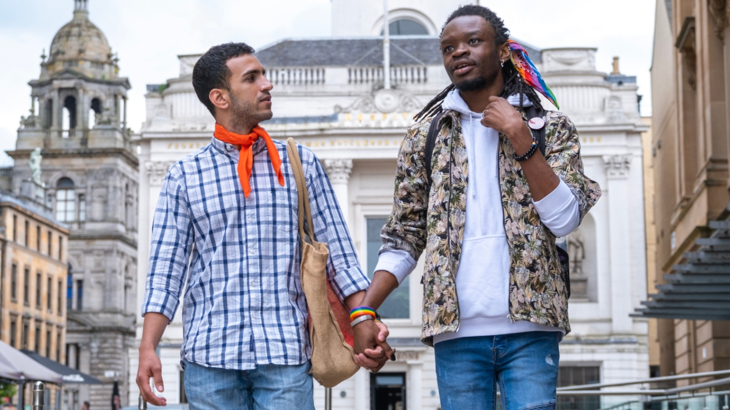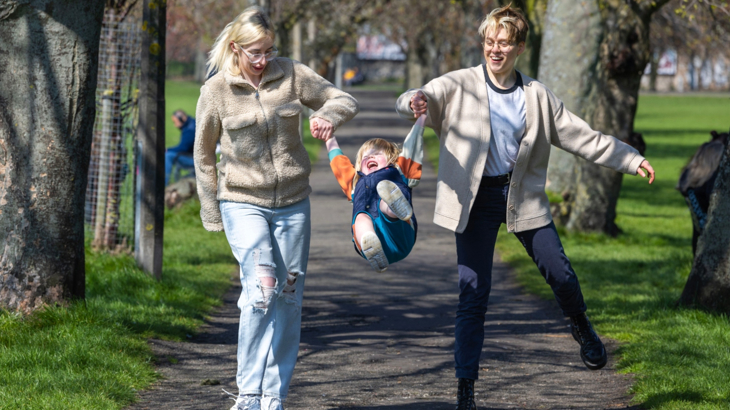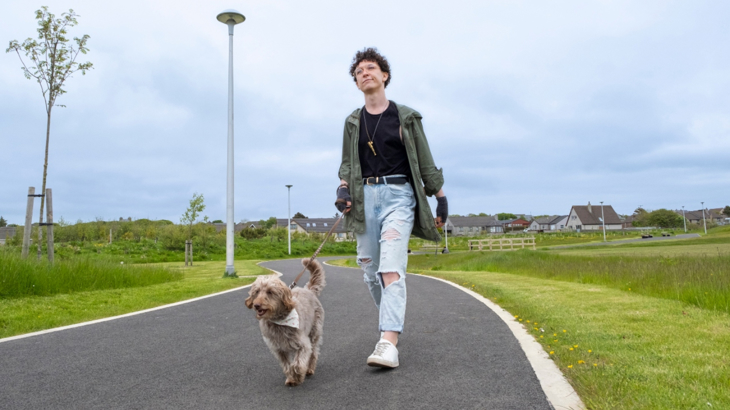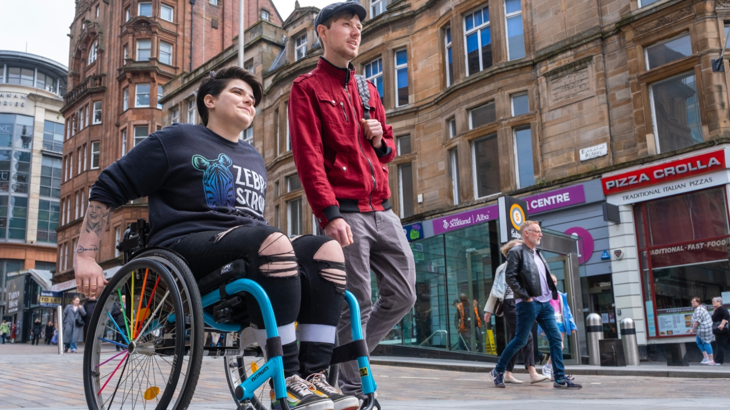A new report into LGBTQIA+ peoples’ experiences of walking, wheeling and cycling shows the journey isn’t the same for everyone.

Credit: Sustrans
Travelling actively isn’t just good for the planet and our health, it’s also a gateway to freedom and connection with the world around us, and to greater participation in society.
Just in time for LGBT+ History Month, Sustrans’ Research and Monitoring Team has published new research exploring LGBTQIA+ individuals’ experiences of active travel in Scotland.
LGBTQIA+ is used to refer to people who are lesbian, gay, bisexual, transgender, queer, intersex, asexual, or who otherwise may not fit into traditional categories of gender or sexuality.
The findings from this research demonstrate that it can be both incredibly liberating and fraught with challenges for LGBTQIA+ individuals to get around their local areas every day.
As well as outlining the benefits and barriers to active travel for the LGBTQIA+ community, this report makes numerous recommendations for change targeted at transport providers.

Many LGBTQIA+ people describe only travelling on familiar routes at certain times. Credit: Sustrans
What did we do?
The LGBTQIA+ community is not a monolithic group. As such, our research aimed to include the widest range of sexualities, genders and experiences as possible, as well as working to achieve a participant group with varied demographics and geographic locations in Scotland.
Our qualitative approach involved conducting the following:
- One focus group
- Eighteen individual interviews
- A survey sent to people who expressed interest in the research but were not selected for individual interview
The interviews and focus group were carried out by three Sustrans colleagues who themselves are LGBTQIA+, and the majority of the team working on the analysis and reporting were LGBTQIA+ as well.

Compared with non-LGBTQIA+ groups, LGBTQIA+ people feel less welcome walking, wheeling and cycling. Credit: Sustrans
What did we find?
Many of the benefits of and barriers to active travel explored in this research are not exclusive to LGBTQIA+ people. However, we found that the experiences of this group are often compounded by structural and societal barriers they face simply because they are LGBTQIA+.
A significant theme emerged through this research, even with the diversity of people we spoke to, and that was a pervasive concern around safety.
This goes beyond the typical worries around road safety, traffic conditions, and sub-standard infrastructure.
These concerns are deeply rooted in the everyday reality of having to navigate spaces where an LGBTQIA+ person may encounter transphobia, homophobia, and biphobia, which could result in harassment and/or violence directed at them.
The report details the huge variety of complex factors that interplay to reduce or amplify LGBTQIA+ peoples’ feelings of safety or lack of it as they move through public space.
One common strategy participants used to feel safer was to try to reduce how visibly LGBTQIA+ they appear.
People talked about making decisions not to wear certain badges or items of clothing, not to wear nail polish, or not to hold hands with their partner in public spaces so that they were less or not at all noticeably LGBTQIA+ or gender non-conforming.
Sadly, this starkly highlights the profound impact of societal prejudice and discrimination on LGBTQIA+ people, forcing them to compromise and minimize their authentic selves to feel safer when navigating public spaces, including active travel.
The people we spoke to also identified benefits of active travel such as a positive effect on their mental health and wellbeing and the relative low cost of walking and cycling compared with other transport options.
Although these benefits are not by any means exclusive to the LGBTQIA+ community, they are important to emphasise.
As detailed in the report, we know that LGBTQIA+ people as a group suffer worse mental health and wellbeing, including financial wellbeing, than the overall population.
This indicates potential for active travel to have a big impact in improving LGBTQIA+ people’s holistic wellbeing, but the full benefits cannot be realized without concerns about personal safety being addressed.

Several participants talked about the mental health benefits of active travel. Credit: Sustrans
How can we change things?
As this was a small-scale project, we are aware that we are unlikely to have captured the full diversity of LGBTQIA+ people living in Scotland.
However, we’ve nonetheless identified specific recommendations for active travel and for transport providers to take forward in order to better support the LGBTQIA+ community.
A variety of these proposals are focused on more inclusive design processes that can address specific concerns and needs meaningfully, and make LGBTQIA+ people feel part of and safer in their local areas.
The other suggestions to come out of the report are largely focused on behaviour change activities such as tailored active travel activities and support for LGBTQIA+ people to encourage uptake of walking, wheeling and cycling within the community.
This research was funded by Transport Scotland through the Scottish Research programme. We’d like to thank all of our participants for their valuable time and contributions, and to Age Scotland who collaborated with us to arrange the focus group with members of their LGBTQ+ network for people aged 55+ living in Scotland.

